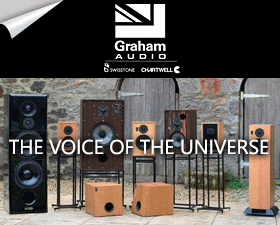I have been pondering this question for some time now and I thought I'd just go ahead and ask it here. When listening to a speaker system, how can you tell if the image "smearing" [if you will] is a lobing issue within the speaker itself or whether it is a timing and phase issue?
How can you distinguish between the two?
I am not sure one can distinguish by listening alone.
In each case the cause is something similar as well, two or more sources of sound radiating the same signal but from an acoustical distance which prevents them from adding coherently.
By that I mean we often think of how signals add through resistors where the result is the simple vector sum of the two inputs. It is for that reason, if you invert one of two equal signals and then add them, they cancel each other out 1+ added to 1- equals 0 (related to the Cosine of the phase difference)..
Loudspeakers drivers can do this as well, two closely coupled subwoofers for example are usually close enough to add coherently into one new source, this condition (coherent addition into one new signal) only happens when the source to source spacing is ¼ wavelength or less and in that condition, each driver also “feels” the radiation pressure from the other source and this (mutual coupling) raises the overall efficiency too.
Once the source spacing reaches ½ wavelength or more (as is usually the case), the sources radiate independently and produce what is called an interference pattern which is recognizable as a pattern of lobes and nulls which reflect the regions where locally the signals add or cancel out.
With an interference pattern where sources radiate independently, if you reversed one source you do not cancel out the acoustic signal you only re-arrange the pattern of lobes and nulls.
The criteria for coherent addition is rarely met in conventional loudspeakers though and so an examination of the polar plots at high resolution normally shows a pattern of lobes and nulls with crossover design usually focused on keeping the main lobe pointed in the desired direction at xover.
As well as being out of alignment in X and Y (Horizontal and Vertical) two sources can be out of alignment in time or Z just as easily because crossovers also act on the time response by progressively delaying the mid and low signals as the frequency falls.
When all the drivers are close enough to add coherently, then one finds there is no critical or minimum distance needed for the sound to “knit together”, no hint there are several frequency ranges or multiple drivers and if one can eliminate the time error, then one has what appears to be a single broadband driver with no crossover.
My interest in this had as much to do with fidelity as driving a horn over a wide bandwidth as if it had one driver and avoiding the lobes and nulls caused by multiple sources because they also radiate a lot of sound in the wrong directions, directivity being critical the worse / larger the room s become.
Best,
Tom Danley
Danley Sound Labs

















